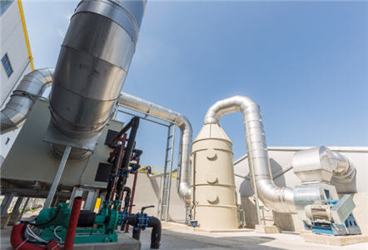Sustainable Infrastructure: A Blueprint For The Wastewater Industry
By Jay M. Tannon

For much of the past century, America’s wastewater industry focused on effective waste collection, treatment, and disposal. Those were laudable goals; and the industry, in large measure, made America a 20th century leader in wastewater management. However, over time, aging systems, burgeoning populations, and budget challenges have caused U.S. wastewater infrastructure to enter the first decades of the 21st century with daunting challenges. While many American wastewater utilities are making significant progress, the industry as a whole garners a disconcerting D+ rating by the American Society of Civil Engineers.
How can we seize the Build Back Better infrastructure push of the new Biden Administration to dramatically improve our nation’s wastewater systems? How can we reinvent these systems with a view toward resource management and sustainability? It is time to more fully embrace innovation and resource stewardship, as well as to be more open to awarding private concessions while retaining appropriate oversight and protections for the public interest.
How do we reduce or even eliminate waste disposal in ponds or on land? Why not dramatically reduce methane release and other adverse environmental and public health consequences? Why not reduce odor and reclaim land for redevelopment? Why punish lower-income neighborhoods in the vicinity of wastewater treatment operations? Why continue to risk stormwater systems overflowing sewer systems, with ensuing runoff into recreational and potable water systems? Why not harness waste for energy and fertilizer? Why not insist on cost-effective water-reuse systems? Why not utilize solar and other renewable energy to power wastewater treatment operations? In summary, why not adopt smart, sustainable approaches to wastewater infrastructure?
For too long, the answer has been because many wastewater authorities lacked the political imperative. Trying new approaches always involves a measure of risk and exposure to criticism. Safety has often meant business as usual, even when that is not advancing the public interest to the greatest possible extent. The combination of budgetary shortfalls and avoiding potential accusations of mismanagement has frequently stifled wastewater authorities across the U.S. for decades.
With infrastructure revitalization, sustainability and public health at the forefront of public policy, the time for timidity has passed. Now is the time for concerted action. Policy support and more financial support from the federal level are surely on the way. Improved wastewater infrastructure will not be forgotten in the infrastructure stimulus that will be a hallmark of the first years of the Biden Administration and its Build Back Better commitment. That said, the needs as well as the opportunities are too great to disregard creative business solutions funded with private risk capital. Nor is there any need or wisdom in doing so.
Nearly every stage of wastewater systems management can be reimagined and reinvented. Water, power, and fertilizer are three high-value resources that can be created from wastewater operations.
Water reuse has seen implementation by wastewater authorities in many arid communities of the United States. But the utilization is minimal compared to the potential to recapture this increasingly precious water resource. Whether graywater for irrigation or more intensive filtration or sanitization to achieve potable water, reuse depends on cost considerations and need in a given location.
Similarly, installing solar or solar-thermal capabilities to power wastewater treatment operations or engineering biogas recovery in some locations can create an even more sustainable posture for wastewater treatment operations. These approaches can help reduce cost or even convert cost centers into profit centers for wastewater operations. While biogas technology has existed for decades in the U.S. and globally, refinement is required to make biogas recovery a staple in American wastewater management. Federal R&D support or other incentives may be necessary to pioneer pervasive harnessing of the energy potential of sewage treatment.
Finally, dried sludge can be utilized as a rudimentary soil conditioner in certain contexts or combined with other nutrients to create high-quality organic fertilizers for agricultural, turf, or ornamental applications. While some progressive wastewater utilities have for years captured some fertilizer value from minimal sludge processing, the potential is vast for dramatic innovation, process, and product improvement and production of exponentially higher value and high-quality organic fertilizer.
Properly implemented, harnessing the value of water, energy, and fertilizer can substantially reduce the cost of wastewater management to ratepayers and taxpayers. Beyond improving “public wealth,” this sustainable approach can improve environmental consequences and public health.
Several communities have already adopted bits and pieces of this strategy. No community has fully embraced all the possibilities of sustainable wastewater management and provided the full 21st century model for the industry.
Private and public analysts have offered a roadmap for the wastewater utility of the future. With a new Administration admonishing us to Build Back Better, now is the time to robustly implement that roadmap.
Jay Tannon is a co-founder and co-managing partner of American Infrastructure Holdings LLC, which focuses on unique sustainable solutions for the wastewater industry.
